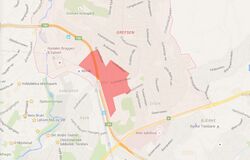LED 2016 Group G Landscape Democracy Challenge 3: Difference between revisions
Jump to navigation
Jump to search
| Line 44: | Line 44: | ||
=== What could be a starting point for democractically-based change? === | === What could be a starting point for democractically-based change? === | ||
*'' | *''The core concept for this case of study is the new appropriation (not a re-appropriation because the villa has never been public) of a place that could be a great resource for the city and for the community. It needs to create a vision. Imagine new activities and new usage modes. The city of Bologna is not dead from this point of view: you can count some episodes where association won public calls for the regeneration of unproductive sites. Starting from the strong features: the park is popular, close to the center, very rich of plants, pedagogical programs that could be empower, you may involve citizenship, particularly the kids from the school, or member the association engaged in protection of the environment and biodiversity, to start visioning meeting to imagine the future of the park.'' | ||
== References == | == References == | ||
Latest revision as of 15:01, 19 May 2016
Regeneration of "Villa Ghigi" in Bologna
| Place | Villa Ghigi | |
| Location | Bologna | |
| Country | Italy | |
| Author(s) | Guido Maria Amorati | |

| ||
Rationale: Why have you chosen this case for the landscape and democracy seminar?
- Why is this case relevant?
- The Villa Ghigi building in Bologna is still representing a missed occasion. This house is located in the homonymous park and dating back to the IXX century, though the first establishment is in the XVI century, but it is now abandoned. The Park of Villa Ghigi has a very high naturalistic value: it is located on the hills at the south Bologna, it is really close to the city center though it has not the features of an urban park. In fact presents a “rural” arrangement, with rows of fruit trees, and has strong differences of levels. The past proprietaries Callisto Ghigi and his son Alessandro brought a lot of exotic species of plants, even from Asia, making the park a sort of oasis for the biodiversity. Today the ownership is of the common, the park and the villa managed by a founding called Fondazione Villa Ghigi that promotes pedagogical activities with the schools and walks in the park.
Representation of your observations
- you are basically free to use one or a mix of different presentation techniques
- possibilities are: analytical drawings, graphical representations, collages, video clips, comic/graphic novel, written essay/visual essay
- please add any visual material to the gallery, videos can be placed below, you may add text as you like
- Yourfilename1.jpg
case representation
- Yourfilename2.jpg
case representation
- Yourfilename3.jpg
case representation
- Yourfilename4.jpg
case representation
Reflection
What are the major challenges for changing the situation?
- Although the park is very popular, there is an under-utilization of the architectural work: the “villa”, the “caretaker’s house”, the “palazzino” where the Fondazione Villa Ghigi is established. There is a project to make the caretaker’s house a small refreshment point, but it is a pity that the a building as important as the villa will remain empty in state of decay. The main problem, as always, is the lack of money, some years ago the common banned an auction but it went deserted. The building need a restoration. The challenge in this case is to raise awareness on what that place could be; is necessary that people knew that the place is resource for the community. People often do not think that abandoned places are their properties and also opportunities, but they only accept the situation as it is.
What could be a starting point for democractically-based change?
- The core concept for this case of study is the new appropriation (not a re-appropriation because the villa has never been public) of a place that could be a great resource for the city and for the community. It needs to create a vision. Imagine new activities and new usage modes. The city of Bologna is not dead from this point of view: you can count some episodes where association won public calls for the regeneration of unproductive sites. Starting from the strong features: the park is popular, close to the center, very rich of plants, pedagogical programs that could be empower, you may involve citizenship, particularly the kids from the school, or member the association engaged in protection of the environment and biodiversity, to start visioning meeting to imagine the future of the park.
References
- ...
- ....
- ...
- Please make sure that you give proper references of all external resources used.
- Do not use any images of which you do not hold the copyright.
- Please add internet links to other resources if necessary.
About categories: You can add more categories with this tag: "", add your categories